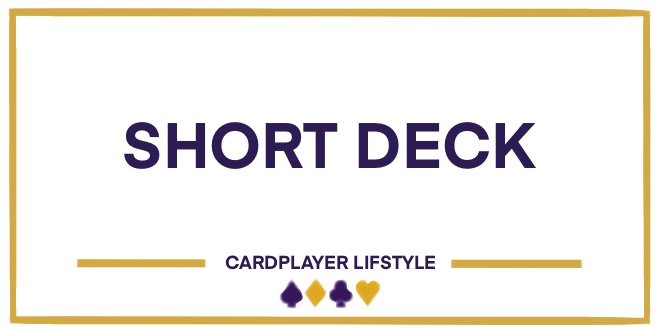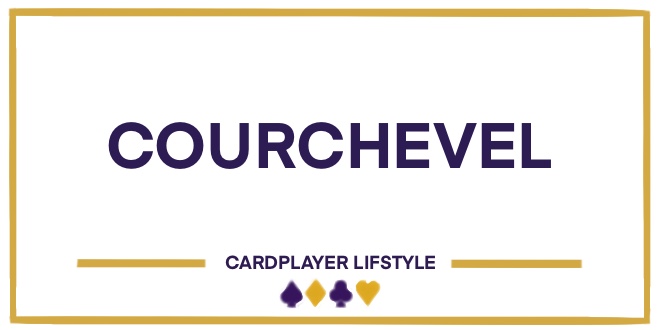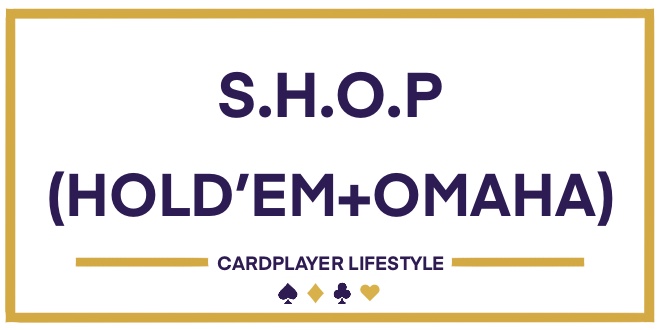While Hold ‘em games (Limit, Pot Limit, No Limit) can be called in a mixed game, this section of Cardplayer Lifestyle’s Mixed Games Poker Guide will be presented with the impression that you understand how to play Hold ‘em. As such, they won’t be discussed in full, only mentioned in reference to other flop games. Besides, if you’re playing in a mixed game, do you really want to play Hold ‘em?
In this section, we’ll be covering the following 10 games: Pot Limit Omaha, Omaha 8 or Better, Pot Limit Omaha 8 or Better, Big O, Limit Omaha, Double Board Omaha, Short Deck, Courchevel, Drawmaha, and S.H.O.P. (a.k.a., S.O.H.E.)
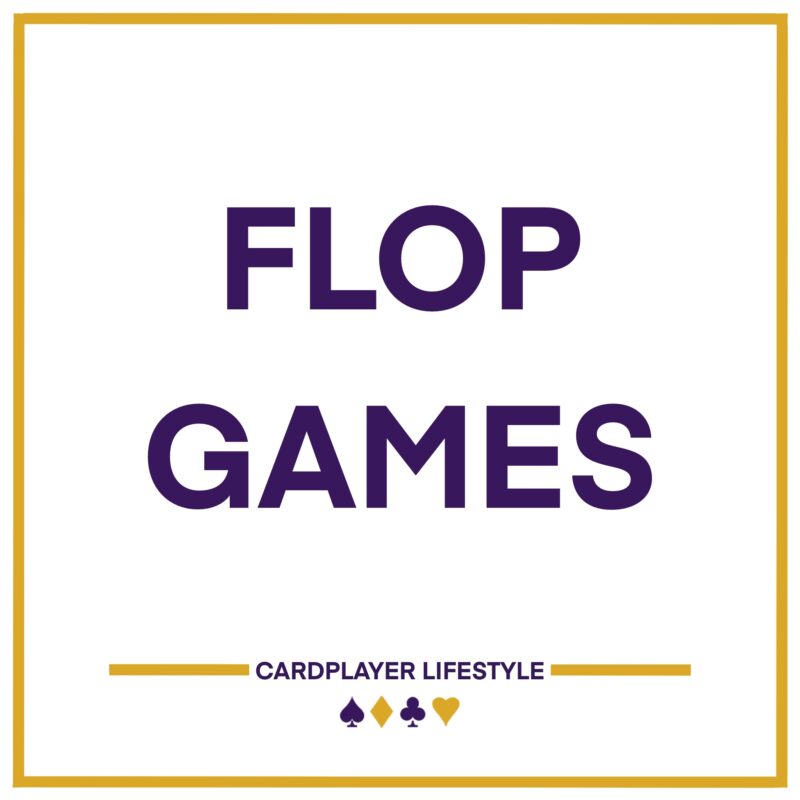
Also, be sure to check out our other Mixed Games Poker Guide articles on Stud Games and Draw Games.
Looking to play mixed game poker? Look no further than our recurring Mixed Game Festival live event series! Plus, you can run your very own mixed game at home with a set of mixed game plaques.
THE OMAHA FAMILY
Omaha almost needs it’s own section among flop games since there are so many varieties. So, we’ll be treating it as such, with the two most popular versions, Pot Limit Omaha and Omaha 8 or Better getting the majority of the stroke, with all its variations following.

Pot Limit Omaha
After No Limit Hold ‘em, Pot Limit Omaha (PLO) is the most widespread game in poker rooms. If you ever feel like changing things up and taking a break from the 2-card game, PLO is a natural transition.
The rules are virtually identical to Hold ‘em, with the key difference of course being the four cards you are dealt instead of two. Players must use two (and only two) cards in their hand along with the five community cards to make their hand. That ace of spades in your hand along with the four spades on the board? Useless, except as a great bluff card! (More on that, below.)
The other key difference is that the maximum that can be bet on any street is the size of the pot (hence the name: Pot Limit Omaha), and that’s also the guideline for how to calculate pot odds, of course.
Other than that? Yup, same as Hold ‘em. That’s why there’s no need to be afraid of playing PLO. While strategies and hand strengths are impacted, the differences in the actual gameplay are quite minimal, and the added action and excitement provide a lot of appeal.
PLO Tip: Blockers, blockers, blockers!
Remember that ace of spades I just mentioned? Well, the concept of blockers really first gained steam from PLO before it became a part of No Limit Hold ‘em vernacular.
With wider ranges, and so many more possibilities to make hands based on your two extra hole cards, there is an added importance on making a truly premium hand. Small sets, low straights and weak flushes are all very vulnerable to being crushed by a player holding the nuts.
As such, if you hold the one key card that prevents your opponent from holding the nuts, who’s to say you don’t have the nuts?! If you have that nut card to the suit on a flush-y board, you can credibly represent holding that nut flush.
Bonus tip: Follow Joey Ingram on social media. There’s no bigger advocate for the “GREAT GAME OF POT LIMIT OMAHA”!
READ MORE: Interview with Joey Ingram

Limit Omaha 8 or Better
The next-most popular game in the Omaha family, Limit Omaha 8 or Better (O8) is a split pot game where players are also dealt four cards instead of two. At the conclusion of a hand, half the pot is awarded to the highest five-card hand, just like in Hold ‘em or Pot Limit Omaha, while half is also given to the lowest qualifying five card hand (the five cards must each be 8 or lower *better*). The goal, however, is to win both halves of the pot, known as “scooping”. If, however, there is no qualifying low hand, the best high hand is awarded the entire pot.
As in PLO, players must use two and only two of their cards at showdown for either side of the pot. For example, a player Holding A2KK on a board of 346KQ can use their two kings for the high, making three-of-a-kind, and then use their A2 to make 6432A for the nut low.
A player with A38K on a board of 2459K will use their A3 for both high and low, as along with the 245, they make a 5-high straight which is the nut high as well as the best possible low hand, a.k.a. the “wheel”.
“I have what’s known as the wheel. It’s got earthy tones a smooth draw and enough kick to win me the high and the low” Mike D #Rounders
— Daniel Negreanu (@RealKidPoker) September 22, 2013
O8 Tip: A2 is your best friend but…
As mentioned, the goal of split pot games is to win both halves of the pot. Well, there are many ways to do it, but a lot of them can also potentially get you in trouble. Not all low hands are created equal. However, A2 is essentially the low version of pocket aces in O8. Pretty much any starting hand containing A2 is playable. If connected with two other low cards like A235, or if the ace is suited, or paired with a high pair like A2KK, A2 has huge potential to scoop a pot for you.
Once the flop falls, however, things can change drastically. If you hold a relatively naked A2 like Ah2s7c9s and the flop comes with no cards 8 or lower, your hand is essentially useless, since a qualifying low hand won’t be possible.
Your A2 can also be counterfeited if an ace or deuce hits the board, and you don’t have other low cards as backup. A2QQ on a K32 flop has a big problem. Unless two more low cards fall, you won’t have a low, and even then, you could be beaten by a better low. If the board does run out K3247, you now lose to A5 and A6, since you only have 7432A. As for the queens, they lose to any king, so they’re in danger, too.
Love your A2 but know that sometimes you have to let that love go.
So, if PLO and Limit O8 are the Mama and Papa of Omaha games, lets check out some of their wacky kids…
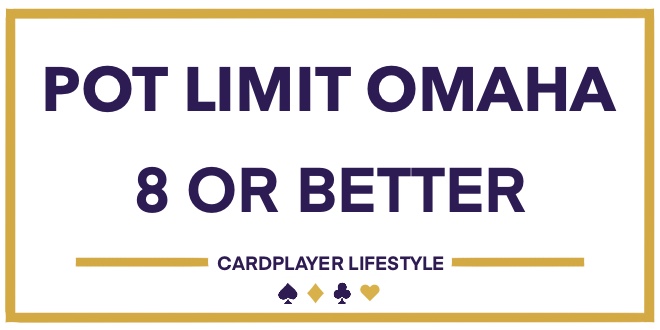
Pot Limit Omaha 8 or Better
The least wacky variant, it’s exactly what it says. A merger of PLO and Omaha 8 or Better.
PLO8 is likely the next most well-known version of Omaha, but it is tough to find a regular game anywhere live. However, it is widely available online.
Hands that play well in Limit O8 also play well in Pot Limit O8, but the importance of having a good 2-way hand is magnified by the fact that the pots can get much larger with pot limit betting as opposed to limit.
As such, strong high hands and low hands with backup (A2 with another good low card) rise further in value. The ability to put more pressure on your opponents with larger bet sizing can put marginal and drawing hands in precarious situations.
Of note, there is also a No Limit version of O8 online (NLO8), that is quite popular. The game structure is the same as limit or pot limit, but the betting is No Limit.
PLO8 Tip: Don’t splash around with marginal low holdings
If you’re playing hands with low possibilities, make sure they’re good low possibilities. Starting hands that aren’t particularly great either high or low are absolute death in PLO8. In low stakes mixed games, players will be splashing around with all kinds of hands, even in the big bet games. It’s crucial to be able to make the nuts or very close to the nuts against very wide ranges.
Starting hands like 4578 or 2489 can make both high and low hands, but neither are going to be particularly good, and will be susceptible to being beaten by players with better highs and lows. Plus, even if you do make a strong hand one way, it’s unlikely to be the best hand the other way. You’ll be putting in a bunch of money drawing live to only half the pot. In big bet variations of Omaha it’s critical that you play to scoop the whole pot.

Big O / Really Big O (5- and 6-Card Omaha)
Even more cards, even more fun!
5-card Omaha games are growing in popularity, basically because as much action as regular 4-card Omaha games provide, the action grows exponentially if you add an extra hole card (or two with 6-card Omaha).
I’ll put these variants together because they can be played high only or hi/lo (8 or Better), and either Limit or Pot Limit (or even No Limit, but it’s very rare).
The 5-card versions are available online as well as in more and more live venues. By contrast, 6-card games can be found sporadically online, and very sporadically live, but can be called in a mixed game.
Big O Tip: Make the nuts
This may sound obvious, but the more cards you are dealt the more possibilities you have to make some sort of hand. As such, players are more incentivized to play. And if that’s the case, and many pots will be multi-way as a result, It’s on you to not be caught with a marginal hand while one of those opponents is likely making the nuts.
For the same reasons that in PLO8 it’s critical to start with a hand that can scoop, It’s even truer in 5- or 6-card versions. Starting hands with plenty of cards working together will set you up nicely for winning big.
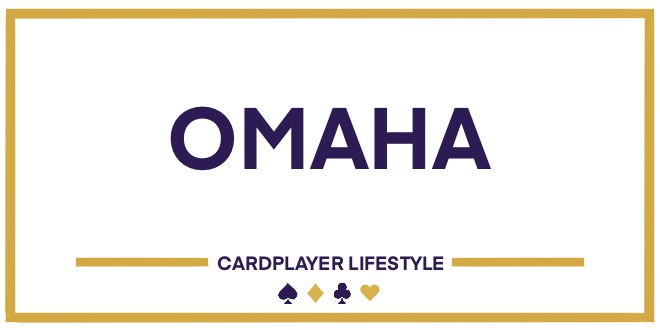
Limit Omaha (High only)
Now we’re getting rare. Regular 4-card Omaha in limit form is really tough to find because frankly, there’s just not as much skill in it, compared to other poker variants (although if you ask the folks playing the $4/8 game at Boulder Station in Las Vegas, they’ll tell you otherwise).
Much like Limit Hold ‘em, Limit Omaha is very much a math-based game, as the combination of four cards with a limit betting structure really limits creativity and offers great pot odds throughout a hand. There is virtually no bluffing, as pots will go multi-way, many until the river, in which case without holding the super nuts, someone will almost always have something that could draw out on you.
Limit Omaha Tip: Know when the odds aren’t in your favor
If you insist on playing this crapshoot of a game, you have to know when that draw of yours is in trouble. There will be many instances when you’ll be getting ridiculous pot odds to draw to… well, a lot of things. The key to this game is knowing when despite those odds, you’re drawing dead to a better version of your hand. A higher flush, a better full house, etc. Reverse implied odds are a danger of limit games with multiway pots going to the river.
When you do have the best hand, you need to bet and raise to at least make an attempt to thin the field and protect your hand from these draws. But, yah, good luck with that.
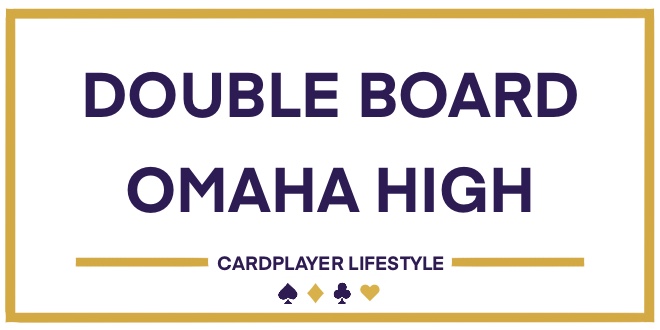
Double Board Omaha (High only)
If you’ve gotten this far in our guide, you may have detected that we’re not necessarily the biggest fans of Limit Omaha. However, throw an extra board out there, and you have arguably the most splashy, fun and ridiculous version of poker available in a mixed game!
The issues that hamper regular Limit Omaha are precisely what make Double Board Omaha great.
It’s almost as if the first person who created this game decided while playing Limit Omaha, “welp, since we’re going to play a high variance game that people aren’t going to fold much in, the hell with it; let’s spread a second board, and crank that variance up to 11!”
Somehow it worked, and it’s amazing.
Following the preflop betting, the dealer will spread two flops (followed by a round of betting), two turns (followed by a round of betting), and finally two rivers (followed by a final round of betting).
We’re not going to lie to you and give you any tips or poker strategy for playing this game. We’re sure they exist, but we don’t know it, and we’re just fine with that.
Generally speaking, this game is primarily played in low-stakes mixed games where the priority is having fun.
There will be plenty of other games in the mix that you may know better and can invoke strategy in.
Take the opportunity to go crazy and have some fun when this game gets called. Use your best poker instincts, and if that fails, make sure you have a beverage in front of you.
OTHER FLOP GAMES
Short Deck (a.k.a., 6+ Hold ‘em)
Short Deck was basically born from action players who got tired of folding trash hands and wanted a higher percentage of playable holdings. How to do that? Tighten the deck by removing all the 2s through 5s! So instead of a standard 52-card deck, there are now only 36 cards in play!
Like regular No Limit Hold ‘em, aces also play high and low, so in short deck they can act as a 5 to form a straight with 6789.
The differences don’t stop there. Though the game can be played with standard small and big blinds, Short Deck is mostly played with antes from all players, with an extra ante posted by the button that rotates clockwise around the table. Preflop action starts to the left of the button, with players having the option to fold, call, or raise, just as in other flop games.
Other differences come in the actual rank of hands. With four fewer cards of each suit available, flushes are now mathematically more difficult to make than full houses, so they are ranked higher. Three-of-a-kind is also more difficult to make than a straight. Most rooms still rank straights higher though, but it can vary from room to room.
Short Deck Tip: Know your preflop odds and bet sizing
If you watch the Triton Series Short Deck cash games and tournaments featuring some of the best players in the world, you’ll see that their preflop betting strategy is different from that of standard No Limit Hold ‘em. You’ll see a lot of limping as well as raise sizes that appear huge compared to the ante.
The caveat though is that with the shorter deck flops will almost always be ‘wet’, with your hand likely to connect with the board in some way. Games are also generally played 6-handed, so an initial limper will be getting 7:1 on the pot. Raises will appear on the larger side, usually starting at the size of the pot and often much larger.
A common mistake made by Short Deck newbies is raising in 2.5-3x increments of the button ante, and not factoring in the full amount of antes in the pot.
With a 1,000 chip ante in a 6-handed game, there will be 7,000 chips in the pot before any betting has taken place. A standard raise to the size of the pot would then be to 7,000. However, many new players will “raise” 3x the ante to 3,000 (roughly 43% of 7,000), merely building the pot size to 10,000 and still providing opponents excellent odds to continue with virtually any playable hand.
In a 6-handed No Limit Hold ‘em tournament with 500/1000 blinds and a 100 ante, with 2,100 in the pot prior to preflop betting, this would be like putting in 900 (roughly 43% of 2,100) to continue if that was possible.
Bottom line: if your intention is to raise, make sure you’re raising the correct amount.
Courchevel
Courchevel is a rarely-played but interesting and fun game, with elements of 5-card PLO (or Big O), with one key difference. Before any preflop betting, a community card known as a ‘spit’ card is dealt. Standard betting with a small and big blind then continues in a normal fashion preflop before the now 2-card flop is dealt and further betting commences. From there, the turn and river are also played as in a normal flop game.
Courchevel can be played as a high only or hi/lo split pot game.
Courchevel Tip: The spit card has a huge impact
As you might expect, with a community card revealed before any betting commences, that spit card will have a huge impact on your hand strength immediately.
Combined with the contents of your five hole cards (you can only use two of your hole cards to make your final five-card hand), you could be dealt trips, three to a nut flush, or three to a straight (and/or a key card to a wrap), all of which are very playable and can be bet aggressively.
However, when you don’t connect with the spit card, you must have a very strong hand outside of it to continue. Something along the lines of a strong starting hand in 5-card PLO. If you’re playing the game hi/lo, this is especially important. You’ll need a strong Big O starting hand, and if the spit card is 8 or lower and you don’t have the possibility to make a low hand, your hand is vulnerable. That’s because other players will already have 60% of a low, and you’ll very likely only be playing for half the pot.
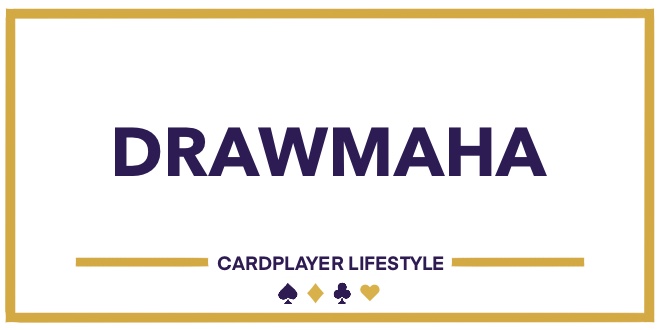
Dra(w)maha
As the name suggests, Dra(w)maha (a consensus on the proper spelling of the game is tough to find) is a split pot game merging Draw (in several forms) with Omaha.
Blinds are posted as in Omaha, then players are dealt five cards, followed by a round of limit or pot limit betting. A flop is dealt, followed by another round of betting.
Following the flop betting, players will have the opportunity to discard any of their hole cards and draw new ones.
From there a turn card is dealt, followed by a round of betting, then a river card is dealt with a final round of betting.
In all variations of Dra(w)maha, half the pot goes to the player with the best Omaha hand, using two of their hole cards. The other half goes to the player with the best Draw hand in their hole cards.
Note that the Draw side can be played in a variety of ways, as 5-Card Draw high, as a 2-7 low hand, or as a 4-card Badugi hand, whichever is determined before the hands are dealt.
Dra(w)maha Tip: straights, two-pairs are good starting hands in standard Dra(w)maha
Straights and two-pair combos in the hole will give you a great chance at winning the Draw half of the pot. From there, you just have to hope for a board of community cards that will help you win the entire pot.
As with all split pot games, you should be playing to scoop, but if you have a virtual lock on half the pot with your draw hand, don’t jeopardize it by breaking (and drawing) in hopes of improving your Omaha hand. If you have a huge Omaha hand on the flop, keep the two cards you need for that and discard as many of the other three as you need to improve your draw hand.
S.H.O.P.
An acronym for “Simultaneous Hold’em and Omaha Play”, S.H.O.P. (also known as S.O.H.E.; simultaneous Omaha and Hold’em) combines elements of both. You’re dealt six cards and need to split your hand into a (2-card) Hold’em hand and a (4-card) Omaha High hand.
It’s a split pot game, with half the pot going to the best Hold’em hand and the other half of the pot going to the best Omaha High hand. The game can be played either Limit or Pot Limit, those some wacky home games also play it No Limit.
Other than that, the game proceeds exactly like either Hold’em or Omaha, as far as the betting and community cards dealt.
S.H.O.P. Tip: The split is key
While you can’t control the cards you’re dealt, you CAN control how strong your two hands are in this game.
As in all split pot games, you want to give yourself the best chance of scooping. Thus, knowing what you know about both Hold’em and Omaha, you ought to try and coordinate your two hands as best as possible such that if the right board comes you’ll be in prime position to take advantage.
If you only have a strong Hold’em or Omaha hand, it’s often still worth at least seeing the flop, but if you don’t connect you ought to muck. If you’re dealt a random collection of six cards that won’t give you much of a chance to with either half of the pot, your best move is folding preflop.
